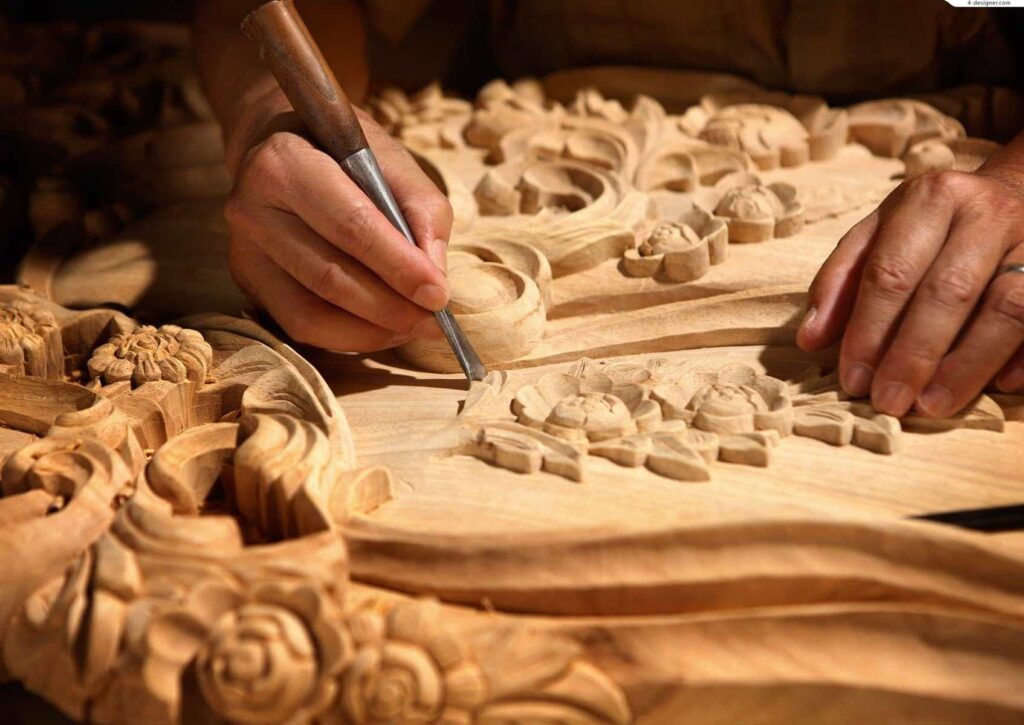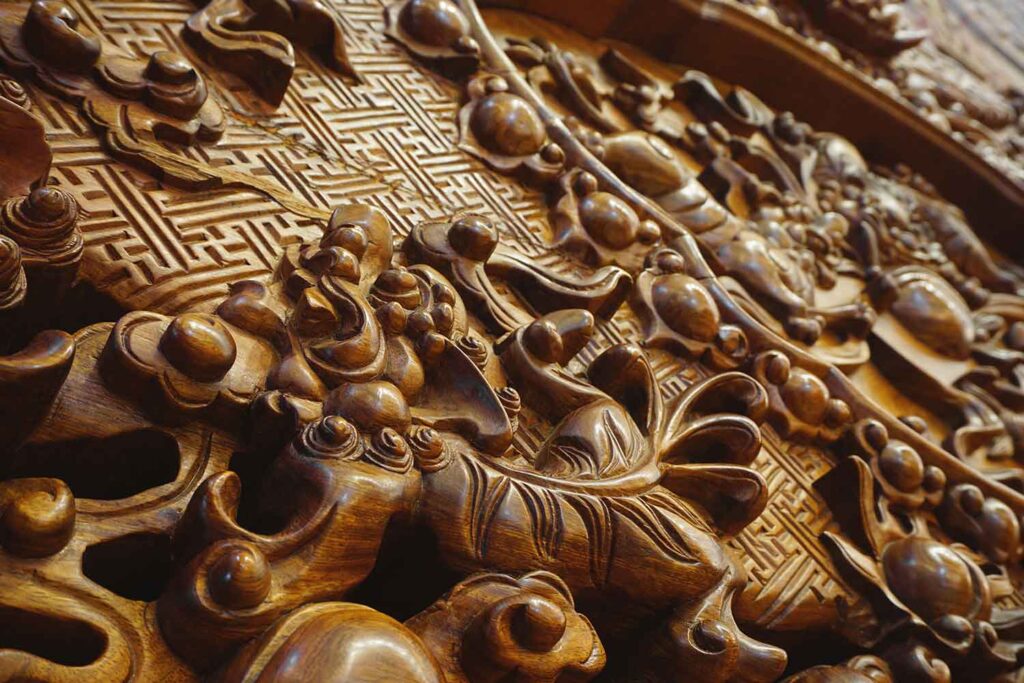Wood carving has a long and rich history in our heritage. The earliest humans used materials such as stone, clay, and animal parts alongside wood, which they mastered. Many objects in our daily lives are still made from this sturdy form, retaining its relevance today. Wood carving dates back to Ancient Egypt. The Egyptian Museum in Cairo contains a statue of a man made from sycamore, probably dating back to around 4000 BC. This piece is one of the earliest in a long tradition of wood carving art.
Some wood carving artists carve and work the wood to have a smooth, fabric-like appearance, while others utilize its rough texture and incorporate it directly into their work. While approaches may vary among wood carving artists, there’s a common thread in wood art pieces; each transforms the solid form of wood into something unexpectedly beautiful.
Wood carving, one of the oldest art forms, has been a common artistic expression in cultures worldwide since the Stone Age, particularly due to its widespread availability, porosity, and low cost. Its only real disadvantage as a medium for sculpture is its susceptibility to decay. Being prone to water absorption, wood is vulnerable to insects and airborne fungi, which can cause rapid deterioration. As a result, bronze, marble, and other types of stone have been preferred for monumental works to prevent decay.
Wood Carving

Wood carving is a sculptural technique that involves shaping a solid material such as wood, stone, ivory, or bone by cutting or scraping it with tools.
Wood, readily available and relatively easy to carve, has captured the interest of artists and designers for centuries. While its trajectory in art closely follows the overall course of art over the years, it has primarily been used for votive and religious sculptures. Rather than being highly polished and colorful, wood has always been valued for its natural qualities and tactile textures. Wood not only took on shapes envisioned by artists but also appreciated for its aesthetic qualities in various forms.
However, wood has been imbued with different social and cultural meanings that influenced its usage patterns. In Western art, for instance, wood was initially considered a material of lower cultural value compared to marble but has since been celebrated and widely utilized by modern and contemporary artists.
The Culture of Wood Carving
Wood carving has been prevalent in various cultures around the world. In African tribes, the carving of wooden masks and figurines was quite common, while wooden totem poles were used for fundamental religious ceremonies by tribes on the Northwest Coast of America. Wooden objects in Oceania often feature intricate designs carved and sculpted onto canoes and large standing figures. In Japan and China, wood carvings have long been utilized to adorn temples and private residences. The Muslim countries of North Africa are filled with intricate architectural carvings.
Wood carving thrived in Scandinavia in Europe, with examples from the 10th and 11th centuries being preserved. In England, despite many being destroyed during the Gothic period, particularly in choir stalls, some examples showcasing fine craftsmanship have been preserved. Wood carving in France was also a part of religious art, with carved altarpieces being particularly notable. Italian wood carving developed during the Gothic period in cities like Pisa, Siena, and Florence, as well as in southern monasteries, and remained a part of Italian artistic development during the Renaissance.

Wood carving methods and styles can be categorized as follows:
1. Chip carving
2. Relief carving
Wood carving primarily utilizes both soft and hard woods, including oak, maple, walnut, black cherry, lime, chestnut, ebony, boxwood, cedar, cypress, olive, teak, and pine.
Wood offers both advantages and disadvantages as a sculptural medium. Due to its fibrous strength, it can be carved more delicately than stone or animal bone. For larger compositions, two or more pieces of wood can be carved separately and then assembled. Shaping hard woods is more challenging but results in greater luster and durability, while shaping soft woods is easier but yields less durability.
Wood is not as durable, weather-resistant, or insect-resistant as stone, and therefore it is primarily used for indoor work.
Wood Carving Process
Wood carving tools include:
– Special carving knife for cutting and stripping wood
– Gouge with a curved cutting edge for making hollows and curves
– Chisel with a U-shaped edge
– Special gouge called a vein
– Chisel with a straight edge for lines
– Various mallets and hammers
The sculptor begins by selecting a wooden block that suits the shape and scale of the design they have envisioned. Using various sizes of gouges, they rough out the wood to an approximate shape and refine it with veins and other tools in various ways. Once the detailed work is completed, the sculptor smoothens the surfaces of the wood with tools like rasps and gouges and different grades of sandpaper. Finally, to enhance and protect the sculpture, they may stain it with walnut or linseed oil and then coat it with varnish, resin, or wax.


